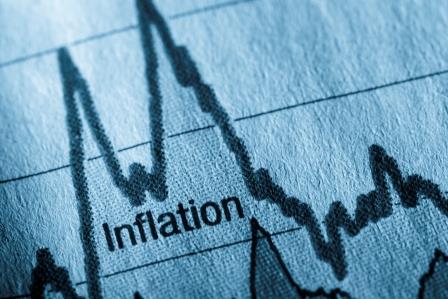2020 was a year that would be registered in the history of the global economy for the wrong reasons. The measures initiated to contain the spread of COVID-19 have pushed the global economy into a recession. IMF predicts the global economy to contract by 3 percent in 2020, much deeper than the contraction seen during the Global Financial Crisis.
As per the estimates of IMF, advanced economies are projected to contract by 6.1 percent. The scenario is similar in the emerging economies also. For instance, the Indian economy contracted by 23.9 percent and 7.5 percent in the first and second quarter of FY21, respectively. As the economy was on a complete lockdown for more than two months, economic activities were at a standstill. The contraction in GDP for the successive two quarters has pushed the Indian economy to a recessionary phase.
However, this is one part of the story. 2020 was a remarkable year for the stock market across the globe. NASDAQ and Dow Jones reached historic highs, when the economic slowdown was severe. Similarly, in India, SENSEX from the low of 29468 in March ’20 reached a high of 47751 in December ’20, registering a growth rate of 62 percent. The boom in the stock market has also initiated discussions on whether this would culminate in a ‘Minsky moment’. A ‘Minsky moment’ is a sudden collapse of the market following a long period of unsustainable speculative activity involving high debt amounts taken by investors.
Currently, the exuberance in the stock market has been fuelled by the excess liquidity available in the market. Since, the onset of the COVID-19 pandemic, Central Banks of the major developed economies have not only slashed the interest rate to a near-zero percent but also resorted to various unconventional monetary policy measures. Quantitative Easing (QE) involving the purchase of long-term assets were initiated by the major Central Banks. For instance, Mortgaged Backed Securities (MBS) held by the Federal Reserve has increased from USD 1366.6 billion on 18th March ’20 to USD 2039.46 billion on 30th December ’20. Similarly, European Central Bank (ECB) came up with pandemic emergency purchase program (PEPP) to deal with the economic risk of Covid-19. PEPP is a temporary asset purchase programme of both the public and private sector. In developing economies also, Central Banks slashed interest rates to ensure sufficient liquidity in the market. The excess liquidity in the global economy has triggered the rally in the stock market.
The surplus liquidity in the developed economies has also supported the stock market rally in emerging markets. The surplus funds in the developed economies fled to emerging markets in search of better and higher returns. For instance, in March ’20, FIIs were net sellers in the Indian market at USD (-)15,157 million. And, in August ’20, FIIs turned net buyers in the Indian market. In December ’20, net investment by FIIs stood at USD 8.5 billion. The increased FII inflows, along with the savings in the import bill helped India’s forex reserves to reach a historically high level. As of December, ’20, India’s forex reserves reached USD 580.8 billion.
The global economy hadn’t completely returned to a normal path of monetary policy from the measures that were unleashed during the Global Financial crisis. Now, with the second dose of unconventional monetary policy measures, due to the COVID-19 induced economic crisis, markets are flooded with funds. It is unlikely that the Central Banks would return to a normal path of monetary policy in the near future. Federal Reserve has even made it clear that there won’t be a rate hike until 2023, which is supportive to the stock market.
However, the question of whether inflation will return in 2021 is indeed a worry. In the global scenario, inflation was considered to be a dead phenomenon. Theoretically, an increase in money supply more than real output would heat up the economy pushing the inflation rate upwards. However, excessive liquidity unleashed post the Global Financial crisis in 2008 failed in pushing the inflation rate upwards. In the present scenario, more factors are coming into play that could push the inflation rate up. With the newly elected US president, the US economy is expected to receive the next round of fiscal stimulus. Similarly, vaccine development could lead to a sharper recovery in economic activities. The rise in global demand could also push up the crude oil prices. In addition to the above factors, monetary stimulus by the Central Banks leading to excessive liquidity in the system mounts inflationary pressure. Yet, it is not necessary that these factors could translate to a higher inflation rate.
If the inflation rate picks up and crosses the target level, Central Banks would be forced to act, and they might slowly withdraw from the easy monetary policy. In India, rising inflation was a challenge for the RBI. RBI paused its rate cut cycle as the inflation rate breached the upper band of 6 percent for nearly eight months. And, if inflation emerges as the villain, Central Banks across the globe should act very cautiously. A sudden withdrawal from the present monetary policy stance would prove costly to the global economy. A gradual and cautious approach would be needed to exit from the current regime.










